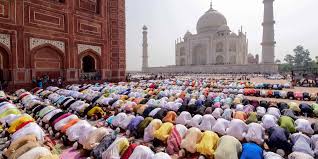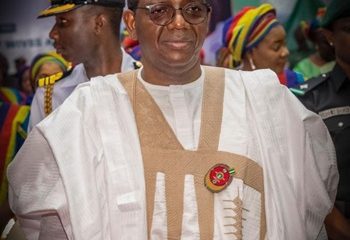News
Eid el-Fitri 2023: A Look At Few Things To Know About Eid el-Fitri

Eid-el-Fitri is the festival that marks the end of a month-long Ramadan fast.
During Ramadan, Muslims fast from sunrise to sunset, avoiding food, drinks, and other pleasurable desires.
Through fasting, Muslims take the time to get closer to Allah (SWT) by improving their ibadah (worship) and increasing dhikr (remembrance of God).
In Nigeria, the Muslim faithful will either celebrate Eid on Friday (yesterday) if the crescent moon of Shawwal is sighted. If not, the celebration will take place on Saturday, meaning this year’s fast will complete 30.
Eid el-Fitri 2023: A Look At Few Things To Know About Eid el-Fitri
Below are few things to know about Eid el-Fitr
1. Eid al-Fitr is one of the two official holidays celebrated within Islam world. The second one is Eid al-Adha.
2. Eid al-Fitr is celebrated by Muslims worldwide because it marks the end of the month-long dawn-to-sunset fasting of Ramadan.
3. Eid al-Fitr falls on the first day of Shawwal in the Islamic calendar (the tenth month of Islamic calendar) when the new moon is sighted by local religious authorities.
4. Eid al-Fitr is known under various other names in different languages and countries around the world. The day is also called Lesser Eid, or simply Eid.
5. Eid al-Fitr has a particular salat (Islamic prayer) that consists of two rakats (units) generally performed in an open field or large hall.
6. The Eid salat can only be performed in congregation (jamāʿat) and features seven additional Takbirs (raising of the hands to the ears while saying “Allāhu ʾAkbar” meaning (God is the greatest).
7. After the salat, Muslims celebrate Eid el-Fitr in various ways with food (Eid cuisine).
Eid Greetings
8. “Eid Mubarak,” which means “Have a blessed Eid!,” is a the most common way of greeting each other on Eid.
Eid prayers
9. Muslims gather for prayers in mosques or outdoor locations. Afterward, some of them even visit the graves of their loved ones to pray and clean the gravesites.
Eid gifts
10. After a month of sacrifice, Eid al-Fitr is a time of abundance—and hence gifts are often given, especially to children. These gifts are in the form of money, accessories, home goods, or flower and are called “Eidi.”
Eid-Al-Fitr is also known as “The Lesser Eid”
11. Eid al-Fitr is one of two important Eid celebrations in the Muslim faith. The other is Eid-al-Adha, the Feast of the Sacrifice or “Greater Eid.” Eid al-Adha celebrates the sacrifice Ibrahim (Abraham) was willing to make to Allah. Like Eid al-Fitr, Eid al-Adha is held at a different time on the Gregorian calendar every year.
On Eid morning, Muslims wear new clothes
12. Before performing morning prayers, Muslims wake up have a bath in a ritual called “ghusl.” Then, they wear new clothes and decorate their hands with elaborate henna patterns. Some people wear traditional dress, while others opt for contemporary clothing.
Eid-Al-Ftr begins when the new moon is first sighted
13. Eid al-Fitr doesn’t begin until the new moon appears in the sky (although traditionally, and still today for many Muslims, it doesn’t begin until the barest sliver of a waxing crescent moon is seen). Technically, that means that across the world, Eid al-Fitr starts at different times and even on different days, depending on their location. To make it more uniform, some Muslims celebrate Eid when the new moon appears over Mecca instead of their own locations.
Ramadan and Eid-Al-Fitr are held on different Gregorian dates every year
14. The Islamic calendar is based on lunar cycles, as opposed to the Gregorian calendar, which is based on the solar cycle. New months start and end with each new moon.
The average new moon appears every 29.53 days, so the lunar months are a bit shorter compared to the Gregorian months, which usually last 30 or 31 days. Thus, every year, Ramadan is held about 10 days earlier than it was the previous year—at least, that is, in relation to the Gregorian calendar.
BY IYABO AINA
Publisher Of News Rain Nigeria























